COVER STORY: How To Make It Big Using Social Media
Rapper Emiway Bantai, lifestyle vlogger Mumbiker Nikhil, singer VoiceOfRitu and TikTok star Mr. Faisu spill the secret behind turning their passion into big money
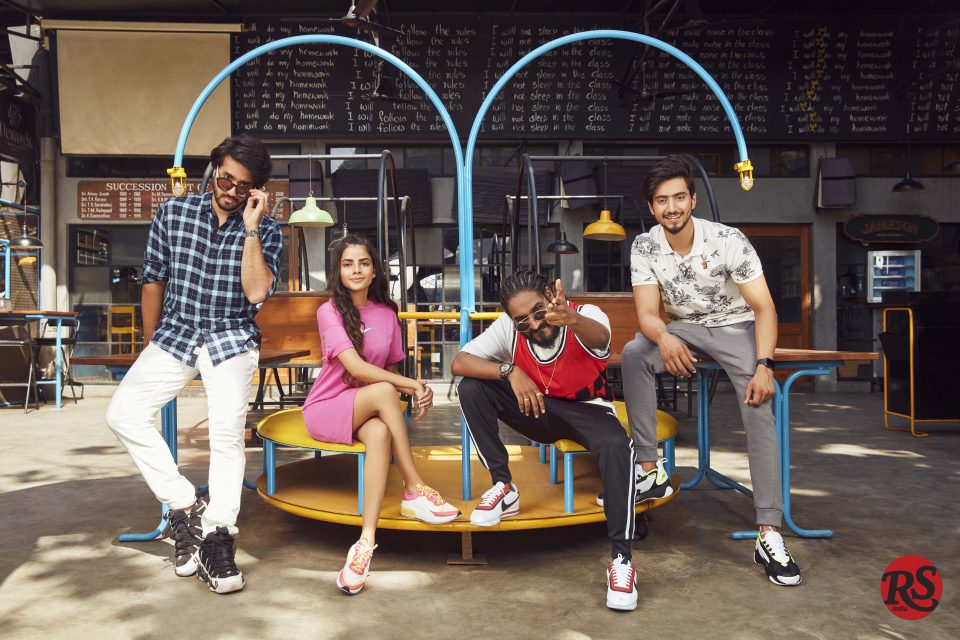
[L-R] Mumbiker Nikhil, VoiceOfRitu, Emiway Bantai and Mr. Faisu photographed by Priyank Nandwana for Rolling Stone India. Styled by Myntra. All clothing by Nike & Roadster.
If you ask a 16-year-old today who they idolize or want to grow up to be like, chances are you will discover an unfamiliar name or two – people that aren’t actors, rock stars or political figures. Chances are you will find that the average youth in India – like everywhere else in the world – follows the journey of the local ‘influencer’ more closely than that of a global movie star. This heterogeneous group includes everyone from fashion bloggers, ‘YouTube musicians,’ comedians, moto vloggers, new-age rappers and more.
Although social media platforms have been bringing the world closer since the Orkut days, the idea of the ‘Internet celebrity’ has swept pop culture only recently with enterprising individuals marketing themselves and their social media profiles as brands. One of the earliest global social media successes stories was singer-songwriter Jeffree Star who, in the mid-2000s, used MySpace to promote his music, and went on to found his own cosmetics company Jeffree Star Cosmetics in 2014, which relied majorly on YouTube for marketing. Today, Star is one of the biggest beauty influencers on YouTube with earnings running into several millions of dollars. The rise of ‘YouTubers’ (creators of lifestyle and comedy content) in the past few years witnessed the likes of Shane Dawson, Casey Neistat and desi-Canadian queen Lilly Singh dominating daily social media feeds of millions of users around the globe.
Instagram contributed its share by producing an army of beauty guru bloggers like Huda Kattan (who would go on to found beauty brand Huda Beauty) while short-form-video hosting service Vine’s brief stint from 2013 to 2017 popped out a bevy of entertainers like digital magician Zach King, pop star Shawn Mendes, comedian King Bach and shock value YouTubers Logan and Jake Paul. As watching television became a thing of the past and the Internet started offering a smorgasbord of video content, these creators rose to iconic statuses, amassing millions of followers on their social media handles who ‘liked,’ ‘shared’ and ‘subscribed’ every nugget they shared. Aided by the addictive nature of YouTube, Instagram and Facebook, the Internet has now turned into a wonderful place where the youth consume content created by the youth.
Relatability matters
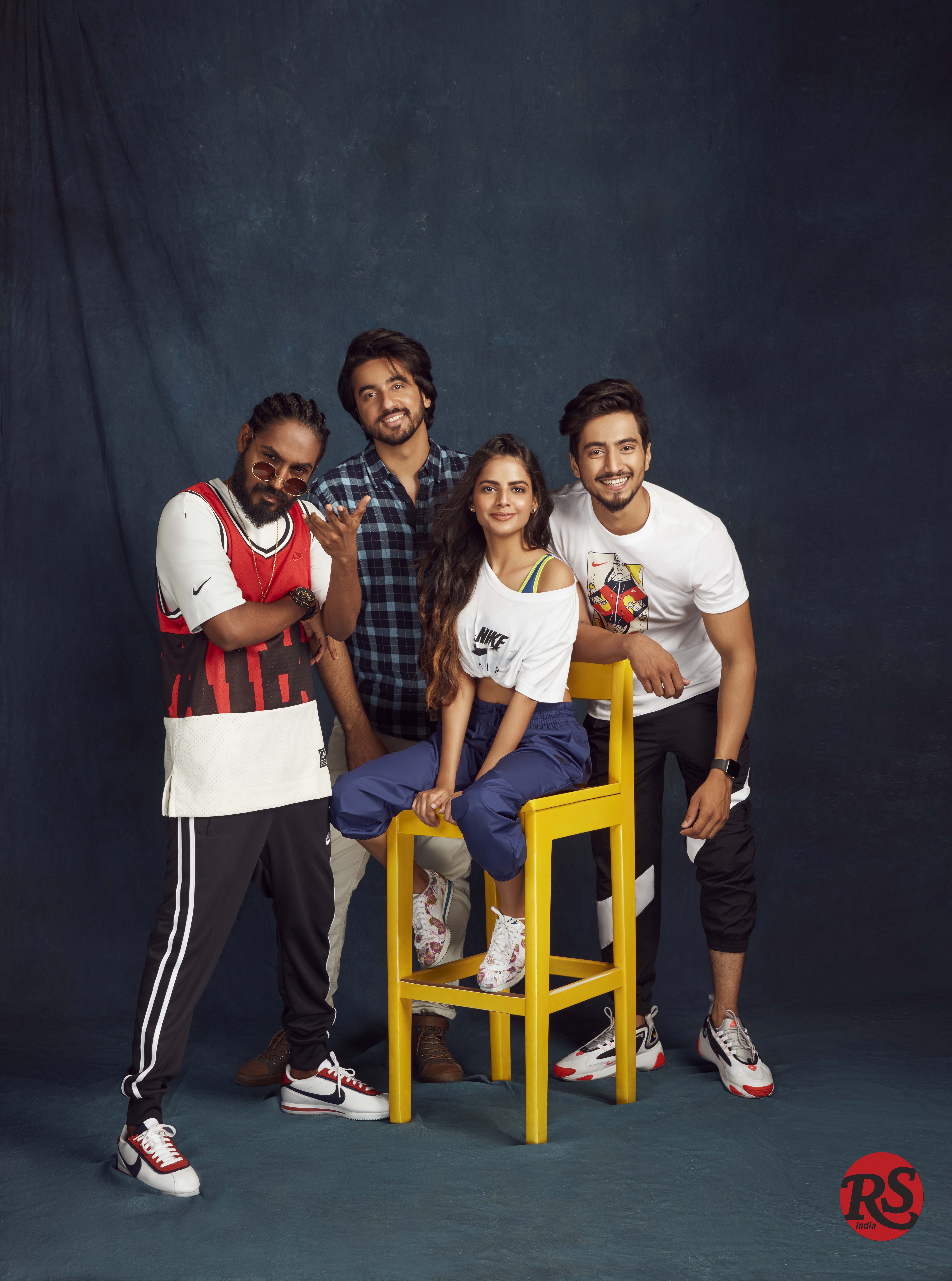
On Emiway Bantai: Joggers, Vest, T-shirts and Sneakers by Nike. On Ritu Agarwal: Crop shirt, Sports Bra, Joggers and Sneakers by Nike. On Nikhil Sharma: Shirt, Denims and Shoes by Roadster. On Faisu Shaikh: T- shirt, Joggers and Sneakers by Nike. Styled by Myntra.
The reason why social media stars are a rage today is because they have a unique asset – their girl/boy-next-door personas help them in connecting with their followers on a personal level. Unlike movie or television personalities, the average influencer doesn’t live in an ivory tower and drive around town in supercars. While some may eventually build a life of luxury for themselves, most social media stars take pride in their homespun success, inspiring the youth to believe that anyone can make it big.
Co-founder and MD at digital media company Qyuki, Samir Bangara says, “We believe that there is a new age of digital superstars, and they have greater equity in the digital galaxy than traditional media stars. It’s not to say that traditional media stars don’t retain their clout, but in the online world, the digital superstars have greater clout and influence.” The social media stars’ niche interests also make them instantly popular among specific communities such as gaming, tech, beauty, music etc. If you’re a backpacking enthusiast, you would rather turn to a travel influencer than a TV show today for unfiltered, credible tips. Social media stars are also early adopters of new trends, which in turn make them leaders and role models in their own right.
The cycle of creator-content-commerce
Cheap data plans and a rapidly increasing digital population has led to a revolution in the way the audiences consume content. According to the report ‘Unlocking Digital for Bharat’ by Bain & Company, Google and Omdyar Network, India is adding 40 million active Internet users annually on an average and the monthly consumption of a user today stands at a whopping 8GB at the very least. The popularity of online video content has erected new breed of superstars in India. On the followership scale, New Delhi-bred Bhuvan Bam (who runs the YouTube comedy channel BB Ki Vines) leads the pack with 13 million subscribers, and his peers include YouTube stars such as Ashish Chanchlani (12 million subscribers), MostlySane aka Prajakta Koli (3.8 million subscribers), Technical Guruji aka Gaurav Chaudhary (12 million subscribers), among others.
If you’re wondering whether social media can really fuel glorious careers, you need only look at Bam’s multiple magazine covers, beauty blogger Santoshi Shetty’s numerous luxury brand endorsements and comedian Abish Mathew’s transition to celebrity talk show host with exclusive deals with online streaming platforms. On the future of social media stars, Bangara says, “India has a youth population of 500 million and the possibility of new business models emerging from a content and commerce perspective with these digital stars influencing the buying decision of people is huge. How that’s going to evolve—the bible of that has not yet been written.” He adds, “It’s evolving as we go along and that’s where it’s super interesting. Various companies are taking various different approaches on how would they solve this problem… not a problem really, but an opportunity. We have our own take on it, but that’s the real interesting part—on how creators lead to content creation, which leads to commerce opportunities. So the arc is creator—> content—> commerce.”
None of it comes easy though. A lot of social media icons will tell you consistency is key—one can’t post one video or blog once in a blue moon and hope to be the next Lilly Singh. Our cover stars are some of the very few in India who have managed to tick all the boxes to social media dominance—consistency, brand recognition, entertainment, relatability and talent. In this exclusive feature, YouTubers Nikhil Sharma (Mumbiker Nikhil), Ritu Agarwal (VoiceOfRitu), rapper Emiway Bantai and TikTok sensation Faisal Shaikh (Mr. Faisu) tell us how to make it big using social media.
Emiway Bantai: ‘I have never spent a penny on promotion’
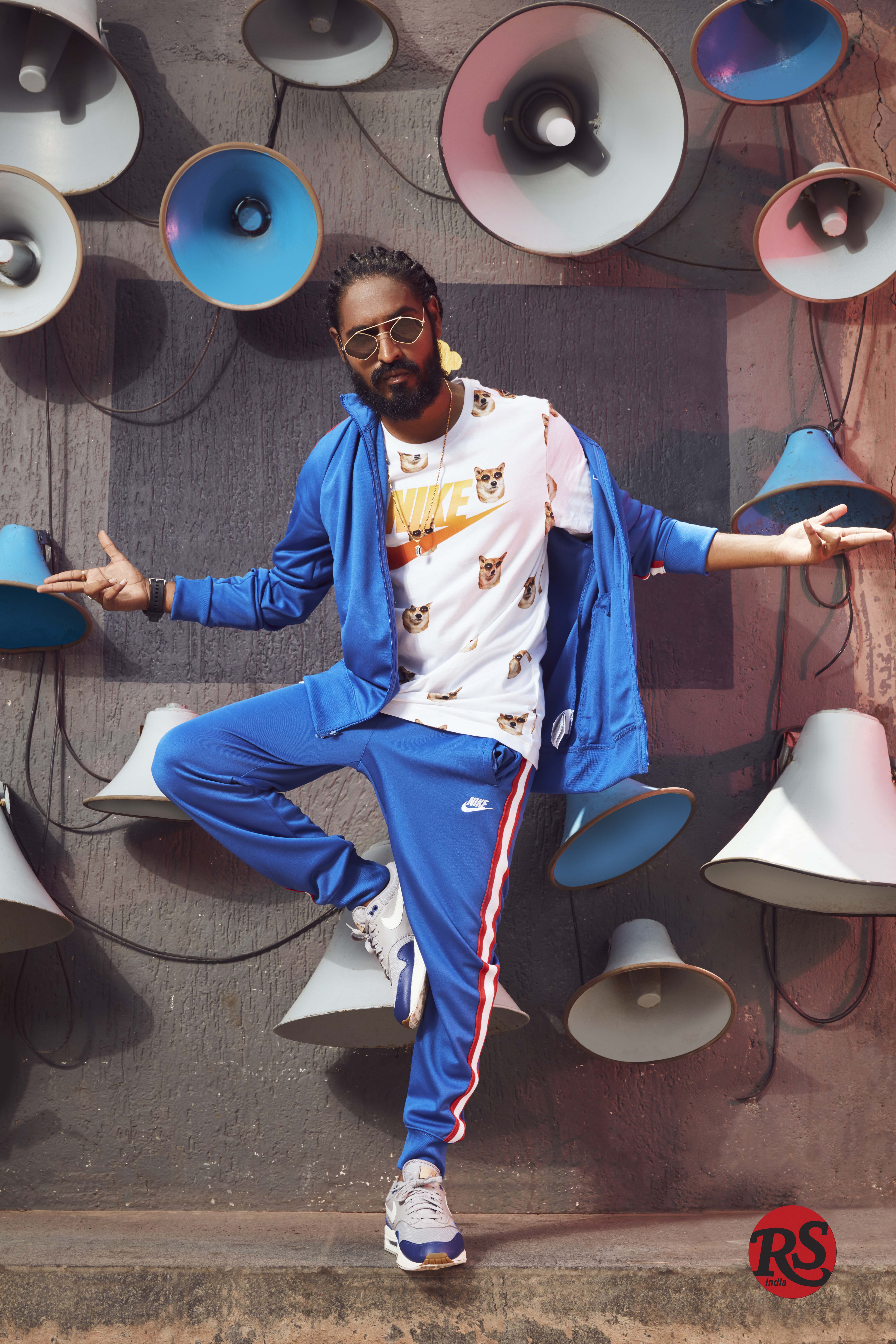
On Emiway Bantai: T-shirt, jacket, joggers and sneakers by Nike available at Myntra
When budding Mumbai rapper Bilal Shaikh decided to pick a stage monicker a few years ago, he didn’t look too far for inspiration. He amalgamated the names of his biggest idols Eminem and Lil Wayne to forge his own new identity. But up until 2010, Emiway Bantai knew nothing about hip-hop—he was introduced to it that year when classmates played Slim Shady’s “Not Afraid” to him. That song changed his life.
Bantai is one of the very few music artists in India that have catapulted themselves into superstardom solely with the use of social media. You’ve only just got to look at his one million followers on Instagram and nearly six million YouTube subscribers. His numbers speak volumes, as do his slick rhymes and sprightly personality. Bantai makes no bones about the contribution of social media in his career. He says, “It’s very important—the crowd and all the Bantai fans are there because of social media. I have never spent a penny on promotion. I believe in hard work.” The hip-hop artist adds, “Because of social media, people in far-flung places like Bihar and Rajasthan can hear my music.”
Bantai was still a teen when he released his debut bilingual single “Glint Lock” in 2013. The rapper’s skills on that track might not be worth writing about, but the humble video has since amassed more than 400,000 views on YouTube. Bantai would later quit his English rhymes and stick strictly to rapping in Hindi. Although “Glint Lock” pushed him into the genre, his 2015 hit single “Aur Bantai” would put his name on the map. The song currently sits at a cool five million streams on YouTube. On his latest releases, the heavy hitter “Dhyan De” (where he fits in as many words as he could) and the lo-fi “Skrrt Karenge,” the rapper showcases his versatility as an artist.
As far as influence among local crowd goes, Bantai’s fan following is second to none. His packed gigs continue to generate hysteria among attendees every single time, his streaming numbers are shooting through the roof and he is the only artist to have won the Best Hip-Hop Artist (People’s Choice) Award at Radio City Freedom Awards three years in a row (2017-2019). Earlier this year, Bantai also featured on the soundtrack of the Ranveer Singh-starrer Gully Boy, on the song “Asli Hip-Hop.”
The rapper’s meteoric rise in the music scene in the past few years has also demanded a change in his look. The t-shirt and jeans that you saw him sporting in the video for “Aur Bantai” have given way to a meticulously crafted layered styled—baggy sweaters and bomber jackets, that are complemented with shades, hats, kicks and the trademark beard. He says, “It’s very important what you wear and how you look—it gives you a unique identity. The basic idea is to stand out in a crowd.”
Now firmly established as a bona fide rapper, what’s next for this social media icon? “I never plan anything; I go with the flow. I have a lot of songs and I am figuring with my team when to release them, but there is no major plan as such,” he says. One thing is for certain—whenever his next track comes out, a social media frenzy will follow too.
VoiceOfRitu: ‘Don’t waste their time, give them something unique’
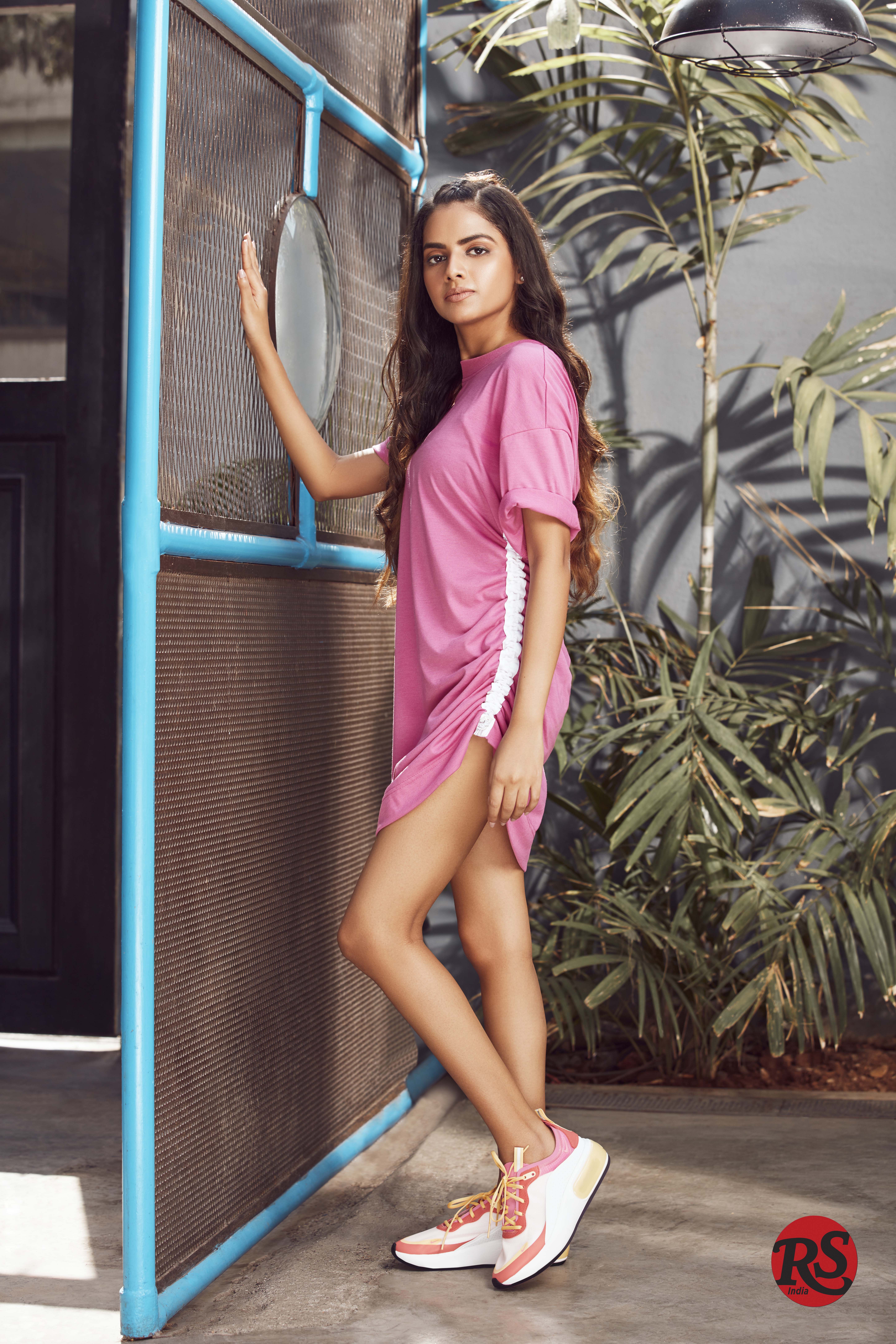
On Voice of Ritu: Dress and sneakers by Nike available at Myntra
A lot of the time people try and take credibility away from social media stars. The common assumptions are that success came to them overnight or that it was perhaps a fluke. Singer Ritu Agarwal, who is one of India’s biggest YouTube stars today (her channel VoiceOfRitu has 1.7 million subscribers), couldn’t be a more fitting example of how all online accomplishments are hardwon. “I’m a classically trained musician,” she tells us with a smile when we meet for Rolling Stone India’s cover shoot. “A lot of people don’t know that about me.” She’s got a degree in Hindustani classical and is also a pro Kathak dancer, just incase you were still looking for qualifications. Agarwal has been singing since she was five but the chance to first be heard on a bigger platform came via the television show The Voice India in 2015. “I learned a lot because The Voice has a very unique concept,” she says. “There was no need of a story, they were just interested in your talent.” She made it to the semi-finals on Bollywood singer Shaan’s team before eventually being eliminated.
Being on the show cemented her belief that music was her calling, but the challenge now was to figure out what came next. For Agarwal, YouTube started as an experiment with her brother, a professional cinematographer. “We said let’s make a pact: we’ll do 10 songs and see what would happen.” They decided to regularly put out 10 cover songs and Agarwal couldn’t believe how it all blew up. “I wouldn’t say I was a very big star on The Voice because it was still a new show, so to get that response…” she shrugs with a smile. “That validation meant a lot.” For any music star on YouTube, cultivating a digital audience is significant for more reasons than one. How is an online community different from a live audience? “I think they just connect with you a lot more,” she says. “They see you grow from start to finish, they know how you start your day, they want to know how you feel about something… they are so much more invested.”
“It’s very competitive,” she says about being a cover artist. In addition to creating a version of a track that competes with the original, the race to have a unique take on a hit song and have it out before the internet floods with covers from other artists, is always a challenge. “And people are bound to compare (your cover to others’.)” But now because of her strong fan base, it’s her interpretation that people look forward to, not just the song itself. “Before I would try and have the cover out maybe the day after the song released to keep up with the buzz, but now people want me to take my time and do a song my way. They don’t mind if it takes 10 days.” It’s this flip that’s the key: Agarwal becoming the point of attraction rather than the song she’s covering. They know her brand, what she’s capable of and what she will deliver.
It all ties back into consistency, as well as being as much of your real, relatable self as possible. “I think it’s about being honest and vulnerable,” Agarwal says about sustaining an audience that will grow and stay with you. “Be open to suggestions and don’t pretend to be something you’re not. You also need to keep a check on what your audience is liking or not liking.” She brings up a brilliant point: the audience has to decide if they’re willing to invest five minutes of their life to a video and it’s up to her to give them something worth investing in every time they click on it. It’s a big responsibility, and one that most creators on social media are very aware of. “I want to give them something unique rather than waste that time.”
There is a lot of criticism and it goes with the fact that a lot of audiences don’t actually know what goes on behind the scenes of Agarwal’s process of content creation. “A lot of people don’t know that it’s still just me and my brother,” she says. “People assume you have a huge crew that helps you produce all this stuff but it’s not true. My most viewed video, “Bulleya” is right now at 52 million views and it was made on a budget of ₹100!” It’s a shocking revelation and she smiles at our stunned faces before adding, “It wasn’t supposed to be made. I almost scrapped it.” When asked what made her put it out, she says it was a gut feeling that she decided to trust, and that’s largely how social media works. “Nobody knows what will boom—you have to keep trying.”
Mr. Faisu: ‘Regular updates are most important’
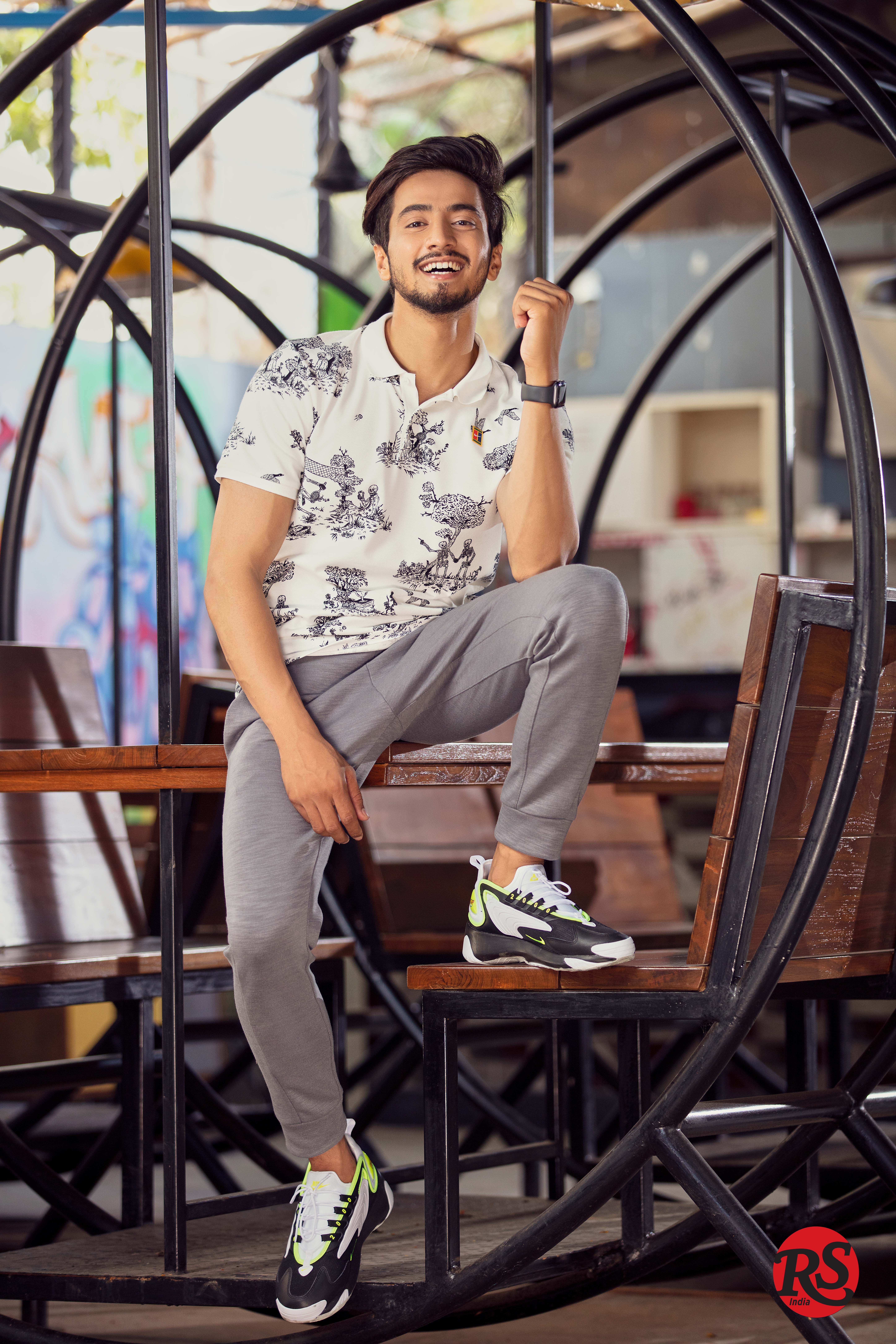
On Mr. Faisu: T-shirt, joggers and sneakers by Nike available at Myntra
Shaikh Mudassir Faisal, better known as Mr. Faisu on social media, is the most followed Indian on TikTok with an audience of over 19 million. It’s a staggering number to even think about and while it makes him one of the biggest names on Indian social media, he admits there are still many who don’t take what he does seriously, calling TikTok stars ‘faltu’ (useless) or gimmicks. But he won’t let it get to him. “It’s only faltu to those who don’t make videos and content (for a living),” Faisal says calmly. “You need only ask a professional how much work and time goes into making videos and how much effort it takes.”
TikTok may be largely underestimated, but it’s still one of the most powerful players in the social media sphere in India, becoming the most downloaded app in 2019—despite its brief government ban in the country. It’s the reincarnation of the popular (but short-lived) video sharing app Musically, but seems to be doing much better on round two with users embracing it on a much larger scale globally. Videos created on TikTok find their way onto Instagram, WhatsApp, Twitter and Facebook with users sharing relatable clips and pushing them to viral levels and it’s one of the first apps that’s given everyone equal footing, no matter their background or location.
Faisal’s rise on the platform has been particularly steep, his followership jumping to its current might in just one year to take the crown of ‘most followed TikTok user’ from actress Jannat Zubair. He leads Team 07, a collective comprising his fellow TikTok stars and friends, each with their own powerful fan following. They create comedic videos of themselves lip-syncing to popular tracks, acting out dramatic scenes from pop culture and making other meme-worthy and relatable content. Unlike Instagram or Twitter, TikTok’s reach goes past urban India to almost every corner of the country thanks to its filmy and desi appeal. Faisal’s biggest strength is being able to create content based on this fact and therefore content that almost everyone in the country can find entertaining. What’s the biggest piece of advice he’d give to someone who wants to make it big on social media? “The first thing is regular updates,” he says with no hesitation. “If you want to be a success on social media, you have to update your platform with content regularly.” It echoes what Ritu Agarwal, Lilly Singh and most other creators consider their mantra: the secret is making sure you don’t get complacent. He also advises aspiring social media stars to invest in a phone with a great camera–you don’t need much else, just your own talent and instinct.
The second question most have on their minds about TikTok is, ‘What’s next?’ Most TikTok stars are aware that the app might fade from relevancy someday, and are prepared. In addition to keeping his Instagram regularly updated with posts about fitness and fashion, Faisal admits he is an actor at his core (it’s those skills that gave him the ability to be a comedic sensation on TikTok after all) and is aiming to make the jump to films. “The next step is the big screen,” he says with a smile, adding that he hopes his powerful nationwide followership could be a spotlight on an artist that wouldn’t have otherwise been noticed. “I began using TikTok just like that and now (my followership) has grown so much… I hope it can take me to films as soon as possible.”
Mumbiker Nikhil: ‘The trolls and the hate are part of the game’
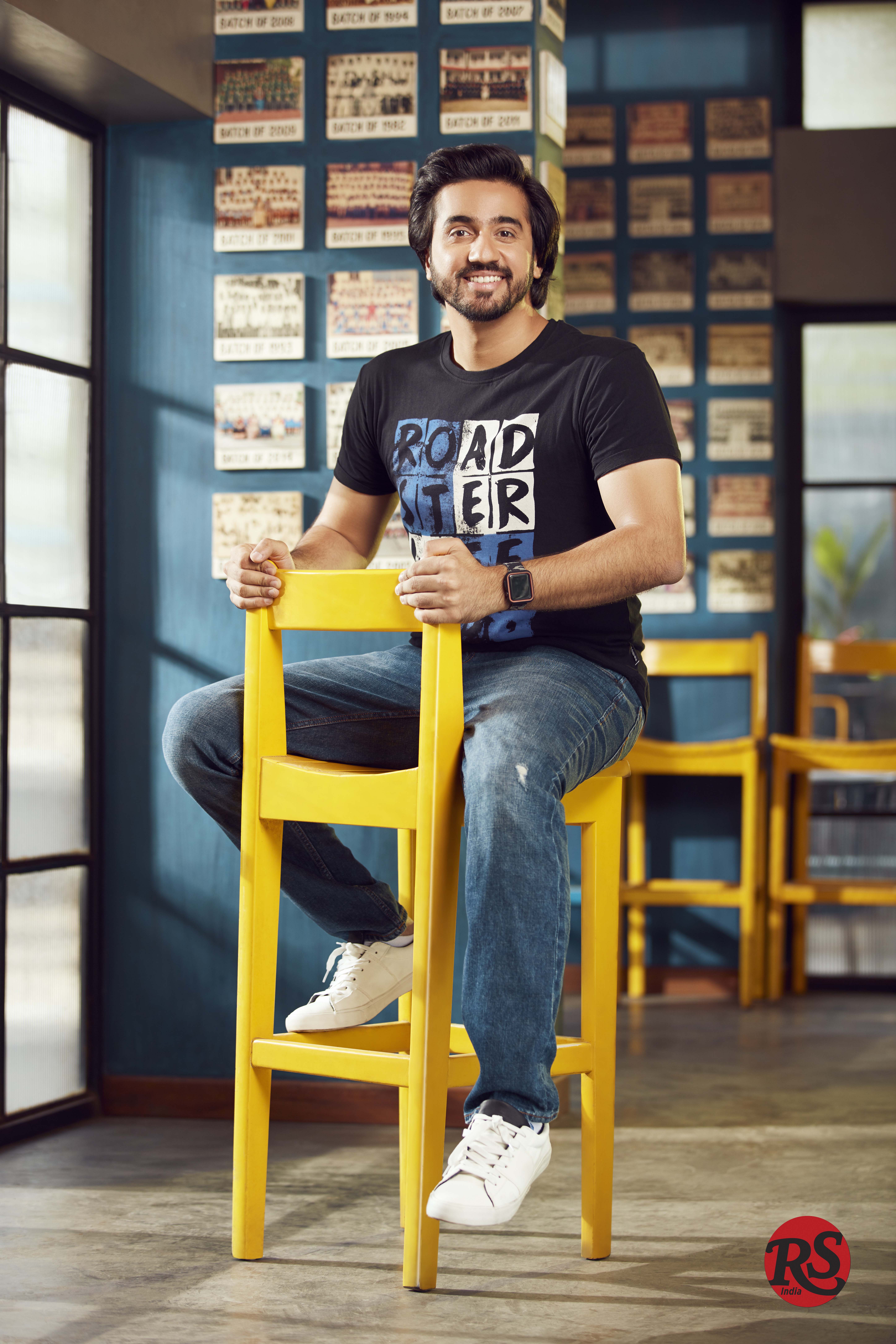
On Mumbiker Nikhil: T-shirt, denims and shoes by Roadster available at Myntra
It was while flying as a purser with Qatar Airways between 2007 to 2013 that Nikhil Sharma started filming his travels. But storing the footage always posed a problem. “Although I had a hard disk, sometimes I would also upload stuff randomly to Facebook, [but] not anything and everything could go up because your family members are there,” he says. That’s when the doors to YouTube opened up.
Currently, Sharma’s YouTube channel Mumbiker Nikhil boasts 2.5 million subscribers. While he enjoys tremendous success today, things weren’t easy at the beginning. He says, “When you start anything new, people don’t accept it easily—they always take time to digest the content. So when I started, I knew there would be ups and downs,” says the 27-year-old. In 2014, it was after watching YouTuber Lilly Singh’s channel, IISuperwomanII that Sharma stumbled upon the phenomenon of individual YouTubers. He says, “I was like, ‘What can I do now?’ I said, ‘Okay people are doing this camera [GoPro] on a bike;’ I had a bike that time, so I started doing that randomly, and I got attention from a lot of people.”
One of Sharma’s first breakout videos was a travelogue of a solo ride on his motorcycle to Leh and Ladakh. “What worked was the raw part,” he says of the candid nature of the YouTube video. One comment even went on to compare him with American YouTuber Casey Neistat. Now with daily vlogs added to his plate, ask the YouTuber how he balances the constant stream of hate and love he receives and he says, “If someone trolls me, I know that I’m not doing anything wrong. In the beginning it used to affect me a lot but I understand that this is part of the game—the trolls, the hate, it’s a part of the game, a part of the whole journey. But it’s just a part though, it should not be the main focus.”
Sharma’s current social media strategy is simple—consistency. “ The reason Facebook grew, Instagram grew, any social media grew is because you want to know about everything that is happening. So when you’re consistent, it helps because the audience wants to know what you’re doing.” Sharma also states that being a lifestyle vlogger, all he is really doing is recording his life. That means he has to be constantly in touch with his fans and can never be fake on camera. He says, “[For example] I have to be honest why drinking this water is good for you, why using this phone is good for you. I can’t be like, ‘Hey guys look at this 44 mega pixel ultra wide selfie camera; you need this in your life.’ No—I have to use it.”
Constantly on the move with a number of things lined up each and every day, Sharma functions with the help of a small team that align things for him. While Sharma shoots and edits videos himself, he has a person each for handling brand deals and his merchandise, Label MN. The YouTuber informs that all the people who help him run his channel today were fans/subscribers of his channel in the past. “My viewers make up my family,” he says.
As far as future goals are concerned, Sharma says, “I want to be healthy and fit. If everything goes well, then I see myself motivating others and do what I do best— making short films for YouTube and stuff, that’s it.”
Styled by Myntra
Photographed by Priyank Nandwana
Art Direction by Tanvi Shah
Fashion Editor Neelangana Vasudeva
Hair and Makeup by Jean-Claude Biguine India
Location Courtesy The Bar Stock Exchange, Juhu, Mumbai







